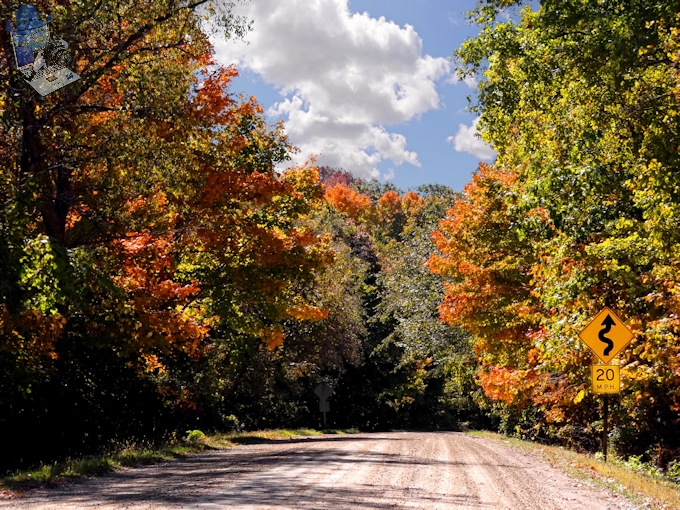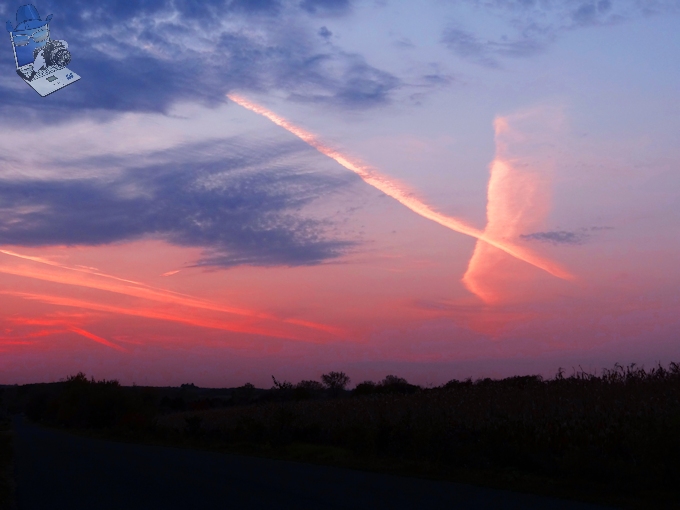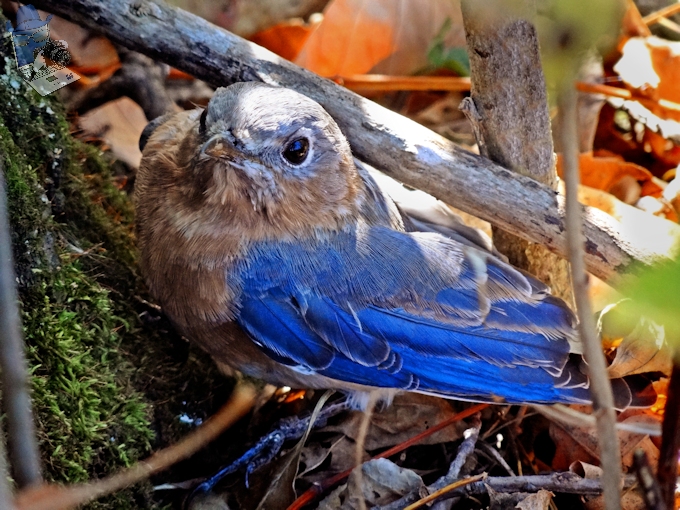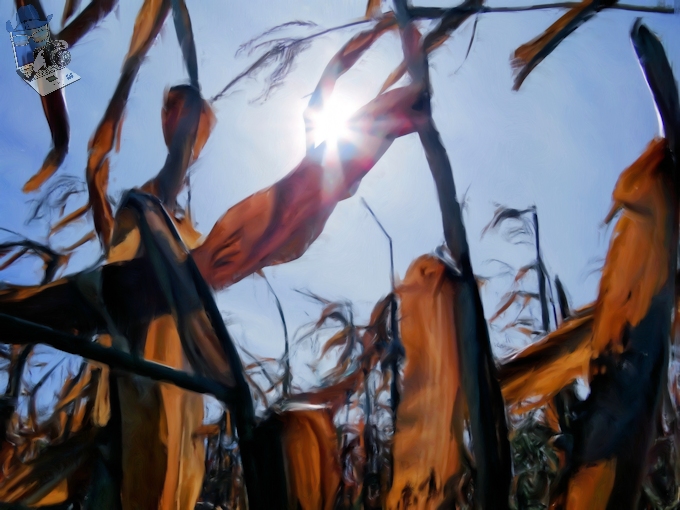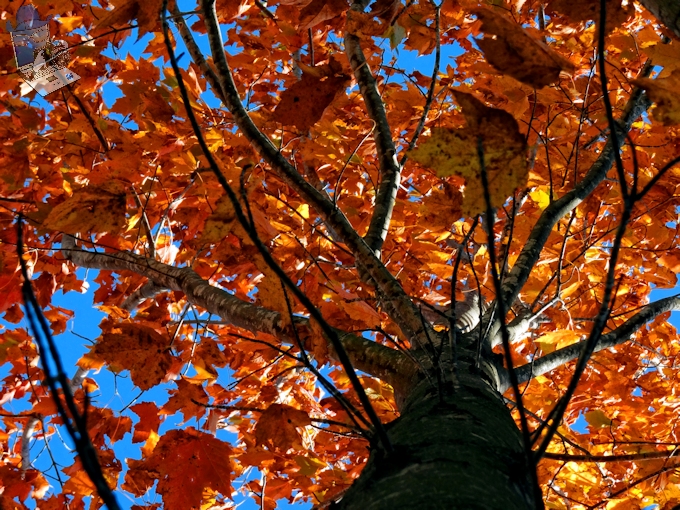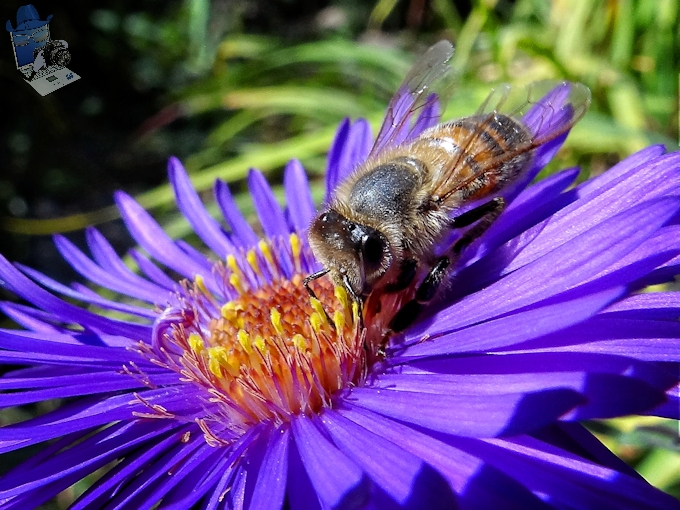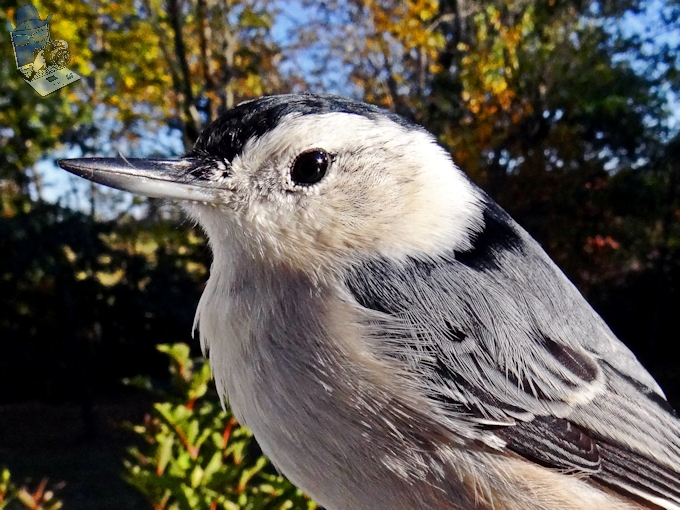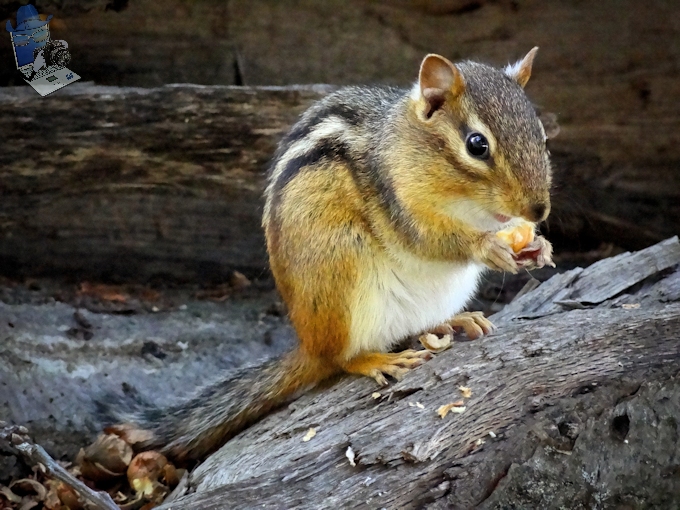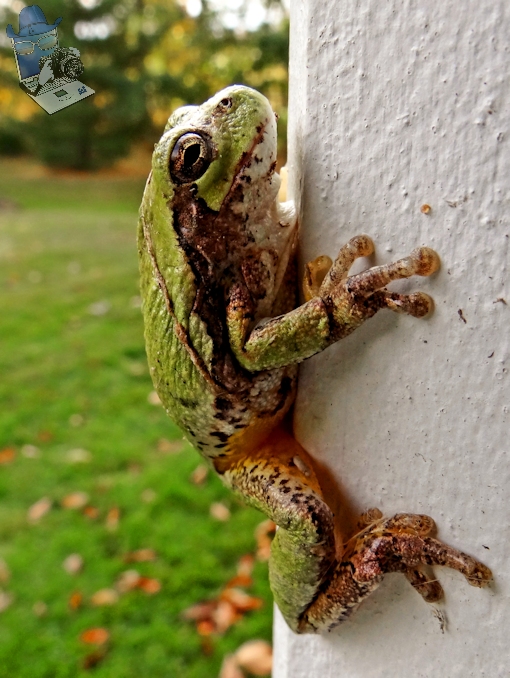Since I used a digital painting of a photograph for the prior post, I thought I would do one more painting of the rustic road that I was on yesterday. And it is a ‘rustic’ road since the Wisconsin Legislature established the Rustic Roads program in 1973 to help citizens and local units of government preserve what remains of Wisconsin’s scenic, lightly traveled country roads.
To qualify for the Rustic Road program, a road should have outstanding natural features along its borders such as rugged terrain, native vegetation, native wildlife, or include open areas with agricultural vistas which singly or in combination uniquely set this road apart from other roads.
Rustic Road 4 description on the WI Rustic Road web site, the rustic road I traveled on yesterday, says “Beautiful fall colors mark the road in autumn, along with many coniferous trees. Watch for glacial rock formations and wild turkeys.” I saw the rock formations and caves, fall colors but didn’t see any turkeys but plenty of other birds.
Rustic Road 4
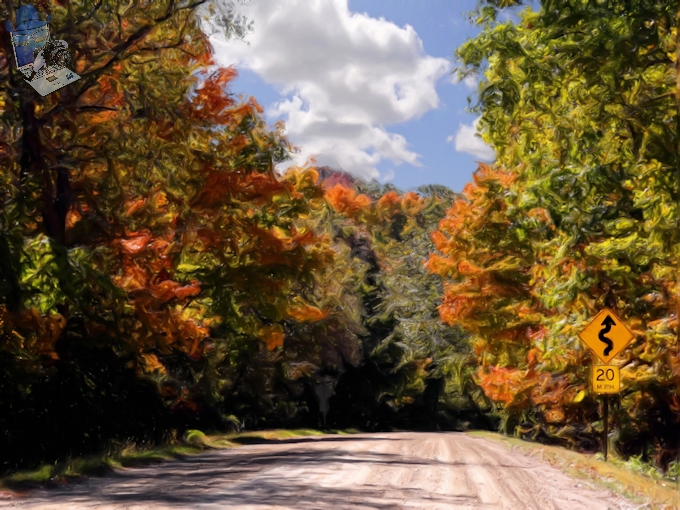
And the original photograph that I took of Rustic Road 4 before I made a painting out of it.
